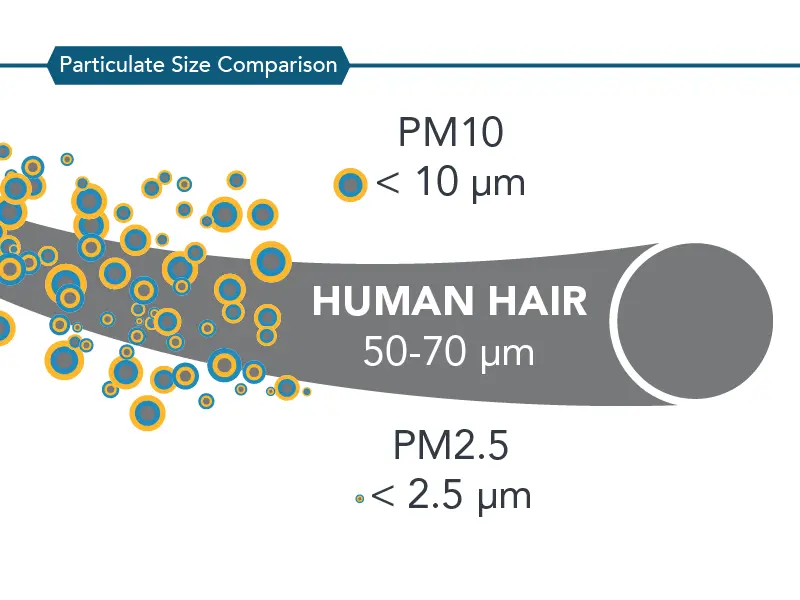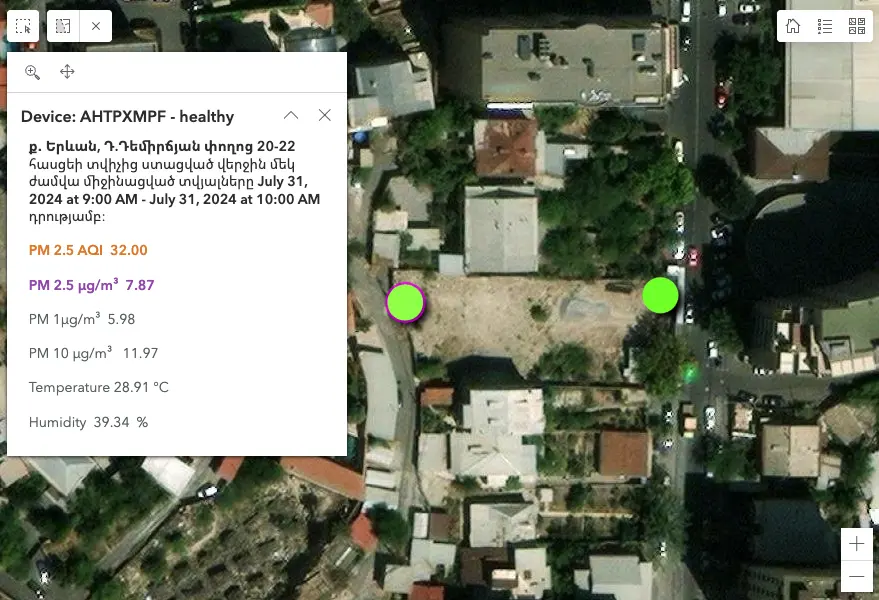Image provided by Troy Mortier via Unsplash
TL;DR: Construction sites are a major source of PM10 air pollution. Coarse dust particles from materials like silica, wood, and drywall can travel through the air and cause serious health issues, including lung disease and cancer. Workers are especially vulnerable, but surrounding communities are at risk for PM10 exposure too. Effective dust control includes using water sprays, barriers, and protective equipment, alongside real-time air quality monitoring. A case study from Yerevan, Armenia, shows how deploying Clarity’s air sensors helped monitor dust exposure and improve policy enforcement.
Every year in the United States, over 300 workers die from silicosis (a condition arising from silica dust), and thousands more are diagnosed with lung disease. Many of these workers are in the construction industry, where they are regularly exposed to dust and particulate matter, which can enter the lungs and harm their health.
The difference between PM2.5 and PM10 air pollution
Particulate matter refers to any solid or liquid particles suspended in the air. These particles can vary greatly in size and composition. PM2.5 and PM10 are two of the most commonly measured categories of particulate matter. PM2.5 refers to particulate matter with a diameter that is 2.5 μm or smaller, while PM10 refers to particulate matter with a diameter that is 10 μm or smaller.

Both types of particulate matter are small enough to be inhaled. PM2.5 is more likely to enter the deeper parts of the lung and deposit on surfaces there. Clarity Movement’s flagship Node-S air quality sensor measures ambient PM2.5 and nitrogen dioxide (NO2) levels. PM10, on the other hand, is more likely to deposit on the surfaces of the larger airways of the lung’s upper region. Both PM2.5 and PM10 can, unfortunately, cause health problems.
In addition to other sources, PM10 includes dust from landfills, wildfires, agriculture, pollen, factories, and, of course, construction. In fact, in London, construction makes up 30% of all PM10 emissions.
Construction dust (PM10) can also drift from construction sites to surrounding areas, affecting local air quality. Under specific conditions, very fine construction dust can even travel up to hundreds of kilometers away. However, moisture and low wind speeds drastically decrease this distance.
What kinds of PM10 air pollution does construction produce?
Construction dust can be broadly classified into three categories: silica dust, wood dust, and other ‘general’ dust. Construction can also include working with asbestos, lead, and mold, which can lead to further health problems. Notably, 87% of homes built before 1940 in the United States have some lead-based paint.
Silica dust comes from working with materials that contain silica, such as concrete, sandstone, and mortar. Silica is a compound made from silicon and oxygen. The most common type of crystalline silica is quartz. While silica is naturally occurring in the environment, its particles are usually too big to be inhaled, making them largely harmless. However, construction activities such as blasting, drilling, cutting, or grinding silica materials can create breathable particles (i.e., PM10), which can be significantly harmful.

Wood dust comes from working with different kinds of wood and wood-based products. General dust comes from working on other materials that contain little to no silica. The most common materials to produce the latter category are gypsum, marble, limestone, and dolomite.
Construction dust health effects
Inhaling construction dust can lead to a variety of health problems, including chronic respiratory issues like chronic obstructive pulmonary disease and lung cancer. Breathing in toxic materials, such as lead and asbestos, can cause further harm. Breathing in PM10, more broadly, can result in asthma attacks, bronchitis, hospitalization, developmental effects, cancer, and premature death.
Breathing in tiny silica particles can lead to scarring and inflammation in the lungs. Inhaling silica dust can result in lung cancer, tuberculosis, and silicosis. Silicosis is a kind of interstitial lung disease. Although there are ways of managing silicosis symptoms, there is no cure. Silica inhalation health risks are compounded with repeated exposure, making jobs such as construction work particularly hazardous. Over 500 construction workers are estimated to die from exposure to silica dust every year in the UK alone.
Best practices for reducing PM10 air pollution from construction
Fortunately, there are ways to minimize and protect against construction dust. Some common dust control methods include sprinklers, sprayers, and mist cannons that prevent dust from rising into the air. Vegetative covers and windbreaks are also useful strategies to prevent airflow from kicking up dust. Even mulch can help tamp down dust. Proper waste reduction can minimize exposure to PM10 air pollution from construction dust after the construction has finished.
Respirators and certain specialized masks can protect construction workers from inhaling construction dust when used properly. It is important to make sure that respirators are effectively sealed, or else they will not be as effective.

Air quality monitoring is another tool in construction dust mitigation. Air quality sensors can help identify when construction dust exposure is severe and how far air pollutants are spreading from construction sites. They can aid in the enforcement of dust regulations and provide valuable data to the public.
One of the key challenges in construction dust monitoring has been the lack of affordable sensors that can reliably measure PM10—coarse particulate matter that poses serious health risks but often goes undetected by standard low-cost sensors. Clarity’s Dust Module was developed to fill that gap. Unlike traditional sensors that struggle with larger particles, it uses enhanced optical detection and a heated inlet to deliver accurate PM10 measurements. This makes it possible to monitor construction dust more precisely, even on sites where budgets or infrastructure would normally limit the use of higher-grade equipment.

Yerevan, Armenia: A construction dust air quality monitoring case study
Rapid urban growth and construction have been increasing dust and particulate matter air pollution in Yerevan, Armenia, increasing the public health risk. To solve this issue, the Yerevan Mayor’s Office and TMCYC partnered with Clarity to deploy roughly 170 air quality sensors across the city. Each major construction site in Yerevan is equipped with at least two air quality monitors.
This robust air quality monitoring network allows the Municipality’s Department of Environmental Protection to quickly detect when dust levels are higher than what regulations permit. This supports city policy enforcement. Additionally, construction companies often self-regulate when they know they are being monitored, further reducing construction dust violations.

Sensor air quality data is open to the public in Yerevan, allowing residents to understand when their local air quality is unhealthy and know when they need to take extra precautions. Open air quality data also promotes public awareness, empowering communities to take action to protect their health.
Clarity’s sensors were particularly up to the task because of their accuracy and affordability. Our air quality monitors are wireless and solar-powered, making them useful for the many construction sites that lack access to permanent power and data connectivity. Moreover, Clarity’s cloud-based platform makes air quality data easy to understand and widely accessible.
Looking forward
Construction dust is a common source of PM10 air pollution that can reduce air quality and cause health concerns. However, control measures and air quality monitoring can make a difference. Clarity’s new Dust Module and our flagship Node-S air quality sensor can help monitor and support construction dust mitigation strategies. Partner with Clarity to find a solution.
